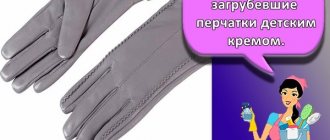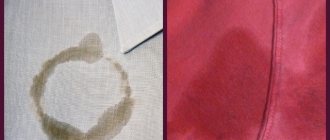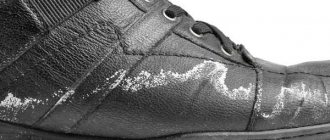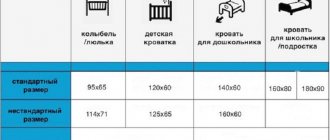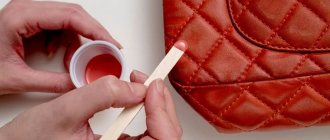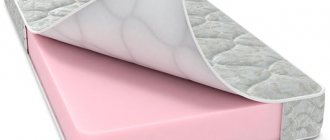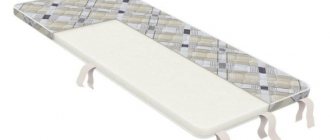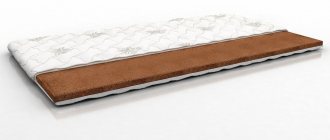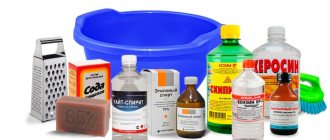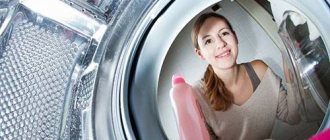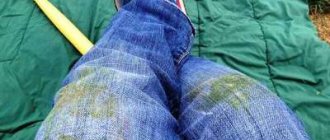General recommendations for washing mattresses
Want to wash your mattress yourself? Please read the important rules. They will make the work easier, and it will give a good result:
- Regardless of the cleaning method you choose, vacuum the mattress to get more dust out of it, remove small crumbs, hair, and pet hair;
- Be sure to check the mattress manufacturer's labeling. It indicates acceptable care methods and technologies that cannot be used so as not to damage the mattress cover and filler;
- Test even the simplest cleaning agent on a small, inconspicuous area of the coating. Apply and leave for 5-7 minutes. Look to see if the textile structure is damaged, if the color has changed, or if there are any other defects. Only after this start working.
Do you want to calculate the cost of mattress dry cleaning? There is now a 30% discount for you!
The mattress consists of a filler, a mattress pad, and a removable cover. When buying expensive bedding, buy several covers for each change. Change them frequently so that the mattress:
- got dirty less;
- did not acquire the smell of stale laundry due to the absorbed secretions of the human body;
- it was easier to clean.
Preventing mattress contamination will save you from unnecessary financial costs. Buy a waterproof cover to protect against urine, blood, colored drinks, and vomit.
Try to wet the mattress less, because all the moisture will leak inside. Each filler reacts to moisture in a special way. If there is a smell of dampness, it means the mattress is damp due to improper care, leakage of urine, water, or drinks. The smell indicates the appearance of mold or mildew, which is dangerous for humans. Only professional dry cleaning of the mattress will help you get rid of them. In case of severe mold or fungus damage, the mattress will have to be thrown away.
IMPORTANT: when wet cleaning, do not use a detergent solution, but foam from it. Prepare it yourself or buy a ready-made product - for example, Vanish active foam.
How to clean a mattress at home from stains of vomit, blood, urine
A wide variety of situations happen that lead to the appearance of stains, and no one is immune from them; the only thing that remains is to eliminate this trouble correctly and in a timely manner. Cleaning a mattress at home is done with various means that most housewives always have on hand.
Let's take a closer look at the most complex and common types of contamination:
- Consumed blood. A mixture of 100 grams of corn starch, 1 tablespoon of salt and 50 milliliters of hydrogen peroxide is excellent in the fight against old blood stains. Mix these components to a paste consistency and apply to the problem area, leave to dry, then just vacuum it. This cleaning is carried out several times until the stains completely disappear.
- Fresh blood. Pour sparkling water over the stain and sprinkle with salt and allow to dry completely for several hours. Then wipe thoroughly. A mixture of citric acid and salt will also help, which should be diluted with water to a paste-like consistency and applied to the stain for half an hour to an hour, then thoroughly clean the residue.
- Vomit. The first step is to remove the bulk of the dirt and blot the area with a napkin or rag to get rid of excess moisture. Sprinkle the stain with starch or baking soda - they will absorb all the remaining liquid and remove the unpleasant odor, leave for 8 hours or overnight, then vacuum the area. Next, wipe the stain with a 1:1 mixture of white vinegar and water, and repeat until it completely disappears.
- Urine. Our main “savior” will be a mixture of lemon juice and salt, which should be applied to the stains and left there for an hour, then wiped with a damp cloth or sponge. You can also dilute a teaspoon of citric acid in a glass of water and treat the surface in the same way, then dry.
These are ways to remove dried urine stains. If the contamination is fresh, it must be treated with vinegar and water (1:3) to eliminate the odor, then cover the area with baking soda. After 10-15 minutes, pour hydrogen peroxide solution (1:2) on top. Foam will form, leave it for two hours. After this time, blot the area with a napkin and vacuum.
Important! When learning how to wash a mattress, pay attention to the composition of the product and the nature of the contamination.
Detergents and bleaches for mattresses
Detergents can have different formulas and contain components for disinfection, deodorization, and bleaching. Products containing active chlorine are suitable for caring for white mattresses. Stains and stains from colored mattress covers are removed with a stain remover.
Among the top three best household chemicals, I would like to name the following drugs:
- Amway.
- Dr. Beckmann, Frosch.
- Vanish.
IMPORTANT : manufacturers do not produce special products for the care of mattresses. You should look for them in the line of household chemicals for upholstered furniture, carpets, and textiles.
The packaging of the drug indicates the method of use and restrictions on use. Please read the information carefully before purchasing and using. Do not violate the mattress dry cleaning algorithm[/anchor] proposed by the chemical manufacturer. Test the product on a small area to protect the mattress from contact with the inappropriate product.
How to clean using dry and wet methods
Types of mattresses that cannot be washed are dry cleaned on the bed. The easiest way is to use a vacuum cleaner and baking soda:
- Mix a sufficient amount of powder (you can take a whole pack) with five drops of clear essential oil.
- Spread the baking soda powder over the surface of the mattress using a sieve.
- Leave it on all day.
- Vacuum in the evening.
Dry cleaning
Dry cleaning products also include special stain removers in the form of wet wipes (Amway LOC), sprays (Amway PreWash Spray, Dr. Beckmann “Deodorant and Sweat”), pencils (Faberlic Edelstar). You can also use Vanish for furniture. Only foam is applied to the surface of the mattress.
Pillows and mattresses based on latex, coconut, and buckwheat are subjected to wet cleaning. Machine washing and washing with large amounts of water are contraindicated for them.
What to do:
- Fill the basin with cool water (not higher than 40°C).
- Add a small amount of dishwashing gel and lather.
- Wet a soft sponge and go over the entire mattress.
- Place the mattress upright and allow excess moisture to drain.
- Dry with a towel and leave to dry in a ventilated area.
It is not recommended to wring out the product and vigorously rub the detergent inside. The mattress is dried in an upright position away from heating appliances.
Cleaning removable elements
The removable elements of the mattress include covers that protect the structure from contamination. They, like bed linen, get dirty from human body fluids and careless use. They are removed, washed or dry cleaned.
There are general rules for caring for mattress covers:
- regular vacuuming and fresh air ventilation;
- wash in water not warmer than 40 degrees C;
- refusal of detergents with aggressive components. Use gels for washing children's clothes.
The care technology depends on the material from which the mattress cover is made. Products made of latex, polyurethane foam, and coconut coir are subject to dry cleaning. Washing parameters depend on the textile from which the cover is made. The main materials are thick cotton, linen, jacquard, membrane fabric.
How to wash a mattress cover
Washing can be:
- amateur and professional;
- at the client’s premises or with removal to the workshop;
- manual and machine;
- with standard or eco-friendly detergent.
How to wash a waterproof mattress cover
These covers are made from high-tech membrane fabric. Its peculiarity is that it is waterproof, but at the same time it breathes and does not float. It is erased:
- only by hand, without friction. Machine washing and mechanical stress destroy the porous structure of textiles;
- without chlorine-containing detergents. The ideal option is a delicate wash gel;
- without boiling - the water temperature should not exceed 40 degrees;
- with plenty of rinsing to eliminate detergent residues in the pores.
Excess moisture is removed by gentle hand squeezing without twisting. To dry, you can lay the mattress cover on a cotton cloth away from direct sunlight. No need to dry it on a radiator or with a hairdryer. It is recommended to treat a clean mattress cover with a special impregnation to protect the porous structure. Aerosol packaging of the drug allows you to do this quickly and economically.
How to wash a jacquard mattress cover
A jacquard cover is characterized by a special pattern, woven or stitched. It can be made of natural cotton, linen, synthetics. Manufacturers do not recommend washing them. On all products you will read the labeling - dry cleaning only. Follow manufacturers' directions .
How to wash a child's mattress cover
Since the child does not always control the fulfillment of physiological needs, a protective layer or cover made of membrane material is often used on children's mattresses. It keeps secretions out and protects against stains and odors.
Removable membrane elements should be washed more often to free the pores from dirt. Hand wash, temperature not higher than 40 degrees C, liquid detergent without bleach or conditioner. The cover is allowed to drain without squeezing, and dried on a line - in a vertical position in a straightened state.
How to wash an Ikea mattress cover
The manufacturer writes on the labels - dry cleaning only. But Russians are not used to retreating, so on the Internet there are tips from those who washed the cover and were satisfied with the result. Experts from CLEAN EVERYTHING recommend following the manufacturer's instructions on the mattress label. But, if you are willing to take the risk, we offer an algorithm that, according to its author, gave an acceptable result:
- the cover was washed in summer in water at 25 degrees C to avoid shrinkage;
- the main detergent is laundry soap, and hydrogen peroxide was used to remove blood stains from the mattress (this article has a section on removing blood);
- washed with a soft brush or sponge;
- washed the mattress in the bathtub. A wet case weighs several kilograms. Washing requires a lot of physical effort and time;
- drying on a strong rope or crossbar. The floor under the mattress cover should be washed in case a wet item suddenly slips or the rope breaks.
How to wash an Ascona mattress cover
A characteristic feature of Ascona mattresses is the Protect a bed cover, which can withstand two hundred washes. It is recommended to wash it in a machine or by hand. Water temperatures are not higher than 50 degrees C.
How to wash a mattress cover
Look at the product label. Is it possible to wash by hand or by machine? If yes, wash the mattress cover yourself or invite specialists from a specialized company.
Can a mattress cover be washed in a washing machine?
Modern washing machines cope with washing thick double bed covers. Follow the manufacturer's care instructions on the label.
At what temperature should you wash a mattress cover?
We recommend washing mattress covers at temperatures up to 40 degrees C. It is better to add washing gel without bleach and other additives directly to the drum.
How to quickly dry a mattress with different fillings after cleaning?
| Types of mattresses | Filler type | Attitude to wet cleaning |
| Spring | Dependent and independent spring blocks | Negative |
| With coconut coir | Fiber from the intercarp of coconut palm nuts | |
| Foam rubber | Foam rubber | Positive |
| Cotton | cotton wool | |
| Bamboo | Bamboo fiber | |
| Silk | Silk fiber | |
| Woolen | Sheep's wool | |
| With holofiber | Non-woven synthetic material made from a polyester compound by thermal bonding |
The most common types of contamination of these products are stains from urine (cat or child) and drinks (tea, fruit juice, cognac). Washing them is half the battle; it is also important to dry the mattress properly, otherwise it will become moldy and become unsuitable for further use.
| Cleaning products for spring mattresses | Preparation | Application | |
| Ammonia | From the smell of urine | 1 tsp. dilute in 500 ml of water. | Using a spray bottle, apply the cleaning solution to the stain and leave until completely dry. |
| Vinegar | Mix with water in a ratio of 1:3. | ||
| Lemon acid | From urine and drink stains, including old ones | 1 tsp. mix with 200 ml of water. | Wipe the work area with a cloth moistened with liquid. |
Foam rubber product
It is advisable to wash such mattresses by hand. Machine washable if:
- safe detergents are used;
- the product is new enough, otherwise the foam will tear;
- aggressive bleaches are not used;
- The product fits in the drum of the machine.
| Products for removing stains from foam mattresses | Preparation | Application | |
| Borax | From stains and urine odor | Dilute borax with water to obtain a paste. | Apply the paste to the work area. Remove the dried mass with a napkin. |
| Laundry soap | Not required. | Lather the stain generously. After 5-10 minutes, rub the treated area with a brush. You should not rub too hard; foam rubber does not like intense mechanical impact. | |
| Soda | From stains left by drinks | Sprinkle soda generously on the work area, apply soap suds on top of it and brush the area with a brush. | |
| Vinegar | Mix vinegar with water in a ratio of 1:3. | Wipe the work area with a cloth moistened with liquid. | |
| Lemon acid | 1 tsp. mix acids with 200 ml of water. | ||
Products with such fillers can only be washed on delicate cycles. In this case, you cannot use regular powder. It is recommended to replace it with gel or shampoo. If you are going to wash a mattress stuffed with cotton wool, bamboo or silk fiber, you need to remove stains from its surface. Yellow traces from urine and dark traces from cognac or tea are eliminated with vinegar, citric acid, ammonia, soda, and borax. Methods for preparing and using cleansers based on these components are described above.
After preliminary cleaning of the described or drink-stained product, you can wash it. If the size allows (for example, when it comes to a children's mattress), you can use a washing machine. In other cases, you will have to wash the item by hand. General rules for washing mattresses stuffed with cotton wool, bamboo or silk fiber:
- maximum water temperature – 40 degrees;
- “Delicate wash” or “Hand wash” mode;
- minimum number of revolutions;
- Rinse 3–4 times;
- Spinning and machine drying are prohibited.
Woolen
| Products for removing stains from a foam mattress | Preparation | Application | |
| A mixture of toothpaste, hydrogen peroxide and cornstarch | From traces and smell of urine | Mix 1 tbsp. l. paste, 1/4 cup peroxide and 1/2 cup starch. | Apply the product to the stain. After drying, remove with a brush. |
| Starch | Dilute starch with water until you get a paste. | ||
| Aspirin | Dissolve 1 tablet in 1 liter of water. | Clean the work area with a cloth soaked in cleaning solution. | |
| A mixture of vinegar and ammonia | From traces of dark drinks | Mix the ingredients in equal parts. | |
Tips for washing wool mattresses:
- maximum water temperature – 30 degrees;
- soaking time for hand washing – 15 minutes;
- mode – “Delicate wash” or “Hand wash”;
- detergents – gels, shampoos;
- bleaches are prohibited;
- minimum number of revolutions;
- Rinse 3–4 times;
- Spinning and machine drying are prohibited.
Mattress with coconut coir
Coconut fiber (which is often called shavings) cannot be wetted, otherwise it will lose its performance properties, and a mattress with such a filler will become unusable. It is allowed to remove only fresh dirt from its surface, which does not require the use of aggressive cleaning agents and intense friction.
Products made from holofiber and latex are easy to care for. They can be washed in a machine or by hand, after first cleaning heavily soiled areas using one of the above methods. As for orthopedic mattresses, they should not be wetted excessively. If there is dirt on the surface, you must carefully wipe the work area with a cotton pad moistened with hydrogen peroxide and wrung out well. It is recommended to entrust the removal of difficult-to-remove stains from urine and drinks from expensive orthopedic products to professionals.
After cleaning, the product must be thoroughly dried, otherwise mold will appear on it, and additional measures will have to be taken to eliminate it. How long a mattress takes to dry depends on the type and thickness of the filling layer. Thick items take longer to dry. When wet, cotton wool and foam absorb a lot of liquid and take a long time to dry. Compared to these fillers, holofiber dries much faster. In any case, this process will take more than one day.
We suggest you read: How to clean the outside of a stainless steel pan
Drying a washed mattress should take into account the following recommendations:
- place to dry on a horizontal surface, turning it over periodically;
- do not allow wet items to come into contact with direct sunlight;
- Avoid placing the product near heating appliances;
- Before placing it to dry, distribute the filler evenly;
- Do not try to speed up the drying process with a hair dryer or iron.
Baking soda and your favorite essential oils can be used to create a natural dry cleanser.
For all types of mattresses: cotton, children's, coconut, orthopedic, spring, dry cleaning is suitable. Before you start cleaning, you need to thoroughly vacuum the mattress. A simple and effective way to keep the mattress clean is to add 10-15 drops of your favorite essential oils to 1-2 packs of soda, mix, cover the entire sleeping surface with a thin layer of aroma soda composition through a sieve for at least 6-8 hours, then vacuum. The soda will absorb excess moisture from the surface, disinfect, and essential oils will give a light aroma.
We dry-clean a mattress at home
If the urine stain is fresh, you need to quickly remove the mattress cover and put it in the wash. Remove any remaining urine from the mattress itself with a paper towel.
Remove stains with paper napkins
Then apply a 1:3 solution of vinegar and water to the puddle using a spray bottle or sponge (vinegar will remove the smell), sprinkle baking soda, it will absorb the remaining liquid, for 10 - 15 minutes, apply hydrogen peroxide (available freely in pharmacies), diluted in water in a ratio of 1:2.
Pour the solution into a spray bottle and apply to the surface
Soda, under the influence of acid, will foam into a stiff foam. After 2 hours, vacuum the mattress and wait for it to dry completely for at least 10 hours. This method is suitable for removing fresh ammonia stains from humans, children, and animals.
For a dried urine stain, try using the 1 tsp recipe. citric acid diluted in a glass of water, generously treat the stain, dry it, after exposure to the acid the dried stain should fade.
Citric acid will help deal with old stains
This recipe should be used with caution because acid is an aggressive substance and can corrode the surface of the mattress or ruin the filling. Never use chlorine-containing products, the dirty stain may fade, but there is a high probability of streaks and the ammonia smell will go away, but in its place will be a specific, sharp, heavy and unpleasant one.
There are features for removing blood stains from a mattress:
- use cold, ice-cold water without soap (warm blood will coagulate and “get stuck” in the fibers of the fabric, making it difficult to remove dirt);
Apply a cloth soaked in cold water to the stain for 30 minutes. - moving a dry sponge or cotton pad from the edge of the stain to the center;
- constantly blot the stain, do not allow the moisture to spread onto the clean area.
Blot the stain with a towel or special cloth
There are several ways to remove old blood stains.
- Soak the stained area with cold water, apply oxygen bleach for 20 minutes, rinse, then wash.
This technique is suitable for removable mattress covers. Oxygen bleaches can be used on removable covers or mattress pads - Make a paste mixture from baking soda and fine sea salt 2:1, moisten the stain with very cold water and rub the paste in with your fingers, without going beyond the clean area.
The exposure time of the mixture is 30 – 60 minutes. , depends on the age of the stain, remove the residue with a napkin, rinse with cold water, vacuum and take out to air to dry. Mix baking soda and sea salt and apply to the stain - Apply hydrogen peroxide 3% to the dried blood and dry from the edges with a cotton pad, do not allow it to spread, repeat, if necessary, several times.
You can use hydrogen peroxide, which is in any first aid kit. - Use ammonia 3% in the same way, only first moisten the stain, then apply ammonia along the edge and gradually move towards the center of the stain.
Ammonia can also be used to remove old stains
Complete washing of a mattress with lining
Washing a mattress with lining is a labor-intensive and ineffective measure. You need to rip open the seam and take out the filler (cotton wool or holofiber). The cotton wool will form clumps after washing, and holofiber, if not hidden in a tied laundry bag, will clog the machine. Washing it by hand is as hard as fluff from a pillow. In general, the game is clearly not worth the candle. We do not recommend embroidering the mattress. Either dry clean it or buy a new one.
Mattresses with zippers are easier to wash. Take out the filling, put it in a pillowcase, tie it tightly, put it in the machine, pour in washing gel, and select the delicate mode. You can dry it in the same bag, periodically turning on the hair dryer at medium temperature.
An orthopedic mattress with spring blocks, natural latex, and coconut coir cannot be washed. Wet surface cleaning of the mattress cover is the only option for amateur care. Deep dry cleaning of a mattress with spring blocks is only possible if it is taken to the workshop.
Washing a mattress without stitching
Most mattress manufacturers explicitly state on their labels that they are dry clean only. Wetting the multi-layer structure of a spring mattress means ruining it. Dampness inside the filler is unacceptable. Even a cotton mattress with synthetic filling requires high-quality drying near a radiator or outside in the summer. You can wash it without embroidering it. For this:
- place the mattress in a bathtub filled with cleaning solution for 20 minutes to soak;
- drain the dirty solution;
- pour a new portion of soapy water, remember the mattress well with your hands;
- rinse repeatedly, changing the water until it becomes clear and clean;
- figure out how to let the water drain into the bathtub;
- dry.
Preparing the mattress for washing
Before washing, prepare the product:
- Remove bedding.
- Remove decorative elements.
- Beat with a clapper or vacuum.
- Ventilate in the fresh air.
Preparing for washing
After this, send the mattress to a manual or automatic wash. Clean large mattresses using a dry method.
Can the mattress be washed?
Look for the answer to your question on the mattress label. Most likely, the manufacturer considers only dry cleaning acceptable. Do you want to take a risk? When starting to wet clean a mattress, be prepared to bear responsibility for any violation of care technology.
How to wash a Dormeo mattress
Washing Dormeo mattresses is prohibited. Liquid household detergents and ironing will cause irreparable harm to the materials used in the production of brand products. Home care includes regular cleaning with a regular vacuum cleaner.
How to wash a children's mattress
You can wash a foam mattress or one filled with holofiber (synthetic wool) in a bathtub or washing machine. Use a hypoallergenic liquid detergent for washing children's clothes. Repeated rinsing, gentle spinning, and flat drying are necessary.
How to wash a coconut mattress
Forums for parents describe options for washing a coconut mattress. It is suggested to remove and wash the mattress cover, and air the coconut filling on the balcony in the shade. Quite complicated and time-consuming, right?
What do we have to do:
- vacuum regularly;
- use a waterproof mattress cover;
- at least once every 2 years, take the mattress to the dry cleaner or call specialists from a specialized company to your home.
You can only wash the mattress cover, by hand or in the machine on a delicate cycle.
How to wash a spring mattress
Mattresses with dependent and independent spring blocks do not need to be washed. Vacuum cleaning, wet cleaning, hand or machine washing of the mattress cover - these are three options for amateur care of orthopedic spring mattresses. Be careful not to wet the litter. If the filling becomes moldy (except for the springs, there are several layers of insulation and textiles), then the mattress will be damaged.
How to wash a cotton mattress
You can wash a mattress with synthetic wool. This method is not suitable for cotton wool. Unless, of course, you are going to unstitch the mattress, wash the cover separately, and leave the cotton as is. However, the filler absorbs odors and absorbs all dirt, so washing the cover with dirty filler will not radically improve the situation.
Mattress with cotton wool
We do not recommend washing a mattress with natural cotton wool. Take a piece of cotton wool, wet it and dry it. You will see what happens to it, and you will understand that filling a cotton mattress after washing will never be the same. The cotton wool will form clumps and it will become unsuitable for sleeping.
Foam rubber
It is better to wash a mattress with foam filling by hand in the bathtub. Then you should rinse it thoroughly so that there is no detergent left in the pores of the foam rubber and you do not breathe in fumes from household chemicals. After rinsing, place the mattress upright in the bathtub against the wall to allow water to drain out of it. Dry it on the balcony or in the yard in the shade.
How to wash an orthopedic mattress
The markings on the orthopedic mattress say unequivocally - dry cleaning only. This means that the manufacturer does not recommend using any water-based technologies (solution, foam, steam) to care for the product. Only the replacement cover can be washed by machine or by hand. Use a liquid product without bleach.
Woolen
It is recommended to dry clean a mattress with a wool filling. Natural wool, in principle, cannot withstand contact with water, this applies to any product. If you nevertheless decide to wash a mattress with wool filling, then:
- the water temperature should not exceed 30 degrees C;
- use a mild hypoallergenic liquid detergent for delicate washing;
- Dry the washed item away from heat sources to avoid shrinkage.
Holofiber
Synthetic wool made from spiral-shaped hollow polyester fibers retains volume due to its structural features, does not wrinkle when washed, and does not bunch up. The mattress can be washed by hand or in a machine (depending on the drum capacity and product size).
Important terms:
- temperature up to 40 degrees C;
- wash in shampoo or gel for delicate textiles, which are easier to rinse than powder;
- push-ups without twisting;
- delicate ironing when the iron is heated to 100 degrees C.
IMPORTANT : read the label before washing.
Perhaps the manufacturer indicated special conditions for caring for the fabric of the cover.
How to wash a children's coconut mattress
Perhaps children's mattresses made from coconut shavings need washing more than other types of products. Even taking into account the fact that such a product is completely hypoallergenic, this does not exclude the fact that dust may accumulate inside the filler. In addition, after all, this is a child’s property and no one excludes small “accidents”, which consist of urine stains and, accordingly, a characteristic odor.
To wash a children's mattress, it is best to purchase special products at a household chemicals store. It is better to give preference to eco-compositions based on natural ingredients. These include the following detergents:
- Meine Liebe;
- Klar;
- EcoRoom;
- Eared Nanny;
- Synergic;
- Johnson's.
The principle of using any of the products is quite simple: it is diluted in water and the filler is washed from all sides. The cover is washed separately. The basic rule: when washing, you do not need to wet the coconut flakes too much. Simply wipe the surface on both sides with a slightly damp cloth or sponge.
Frequent pollution
The most common contaminants in mattresses are human and pet urine, sweat, blood, colored drinks, and vomit. To remove stains, household chemicals and traditional methods are used.
How to remove blood from a mattress
Fresh blood is removed with a well-wrung out damp cloth. You can rub it with laundry soap. An old bloody stain should be soaked by placing a damp cloth on it for 30 minutes. Then moisten the stain with hydrogen peroxide. Remove the brown foam that forms when blood reacts with peroxide with paper towels until the stain disappears.
How to wash urine from a mattress
A fresh stain should be blotted with a paper towel. Next, mix an equal amount of vinegar and water and wipe the stain with the solution. A good result is obtained by combining 80 ml of hydrogen peroxide with 1 tbsp. a spoonful of baking soda and a couple of drops of dishwashing detergent. Mix the ingredients in a spray bottle, shake well, and spray the stained area. Rub with a sponge, wipe with a damp cloth, dry the mattress.
How to wash cat urine from a mattress
The algorithm for cleaning a mattress is as follows:
- blot the stain with paper towels, let them absorb as much of the ammonia-smelling liquid as possible;
- prepare an aqueous solution of vinegar (1:1) or hydrogen peroxide (1:1). It is recommended to add 1 teaspoon of dishwashing gel to the second solution;
- Apply the cleaning solution to the stain with a sponge (microfiber cloth), leave for 15 minutes;
- collect the cleaning product with a clean damp cloth, wipe the area with a damp cloth, blot with a paper towel, and let dry naturally.
How to wash a mattress from baby urine
Urine from a baby up to one year old can be removed with a damp cloth and laundry soap. Older children's urine stains can be removed in the same way as adult urine stains. We wrote about this a little higher in this publication.
How to clean vomit from a mattress
Use a garbage scoop to remove the vomit. Wash the stained area with a solution of vinegar and water (1:1), wash with Vanish or laundry soap. To remove the odor, sprinkle the washed area with baking soda powder and leave for 8-12 hours, after which it is collected with a vacuum cleaner. Wipe the area where the stain was with a clean damp cloth.
How to remove stains from a mattress
After amateur cleaning of stains of blood, urine, vomit, and colored drinks, stains often remain on the mattress cover. You can remove them by calling a dry cleaner from a specialized company. Professional technologies restore neatness to mattress covers.
How to remove blood stains
The question of how to clean blood from a mattress can also be solved with home remedies. Let's list a few recipes.
Use starch, salt and hydrogen peroxide. Take 2 parts starch and 1 part each of other products. The resulting paste must be applied to the mark and wait until it dries. Afterwards, you can remove the mixture with a napkin or cotton pad. Perhaps the old dirt will not go away the first time, then you will have to repeat the procedure 2-3 times.
Baking soda alone will solve the problem. It needs to be diluted in water in a ratio of one to one and applied to the area, left for about half an hour, and then blotted with a napkin. A dry towel can remove excess moisture.
Regular hydrogen peroxide without starch and salt can also be a savior. Instructions for use are as follows. Drop peroxide onto the stain and the area will begin to foam. Blot with a napkin and repeat the procedure. Wait until foam stops forming. Afterwards, you should wipe the area with cold water, perhaps with a little salt added. Please note that it is not recommended to use hot water in contact with blood, as there is a risk of “sealing” the stain, which will then be difficult to remove.
Dishwashing liquid is also suitable. To do this, you need to mix a tablespoon of household chemicals and half a liter of cold water. Afterwards, soak a cloth in the resulting mixture, apply it to the stain, remove it and lightly rub the soapy area with a toothbrush. When the blood has cleared, rinse the surface with clean water and dry with a towel.
